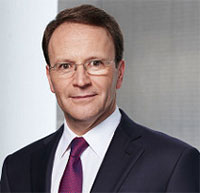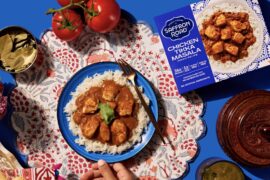Vevey, Switzerland-headquartered Nestlé has reported a 6% decline in net profit for 2016 to 8.53 billion Swiss francs (approximately $8.53 billion), while revenues edged up 0.8% to 89.47 billion francs. Organic growth rose 3.2%, with real internal growth reaching a three-year high of 2.4%. Trading operating profit margin advanced 30 basis points in constant currency.
“Our 2016 organic growth was at the high end of the industry, but at the lower end of our expectations,” said CEO Mark Schneider. “In 2017, we expect organic growth between 2% and 4%. In order to drive future profitability, we plan to increase restructuring costs considerably. As a result, the trading operating profit margin in constant currency is expected to be stable. Underlying earnings per share in constant currency and capital efficiency are expected to increase.”
 Stouffer’s Fit Kitchen frozen meals performed well for Nestlé in North America last year.The Americas zone (AMS) generated the best organic growth rate at +4.2%. Lean Cuisine and Stouffer’s Fit Kitchen frozen food brands posted solid gains in the USA and Canada, supported by new line extensions.
Stouffer’s Fit Kitchen frozen meals performed well for Nestlé in North America last year.The Americas zone (AMS) generated the best organic growth rate at +4.2%. Lean Cuisine and Stouffer’s Fit Kitchen frozen food brands posted solid gains in the USA and Canada, supported by new line extensions.
Elsewhere, currency devaluations in Latin America enabled Nestlé to raise prices in that region. Pizza continued to be a key source of growth across most markets in Europe.
 Nestlé CEO Mark SchneiderSchneider, who has been on the job as chief executive since January 1, made it clear that the frozen food remains a core business for Nestlé. This should set aside speculation from some financial analysts and bankers that the sale of certain frozen brands could benefit stockholders.
Nestlé CEO Mark SchneiderSchneider, who has been on the job as chief executive since January 1, made it clear that the frozen food remains a core business for Nestlé. This should set aside speculation from some financial analysts and bankers that the sale of certain frozen brands could benefit stockholders.
The company’s Yinlu food unit in China recorded a “double-digit decline” due to heavy price pressure. Several initiatives to turn around the business are now in place and stabilization is expected in 2017.
Meanwhile, Nestlé is expected to declare a dividend of 2.30 francs per share at its annual meeting in April.





